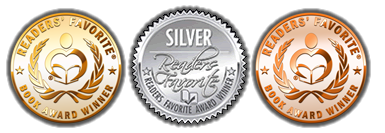 Crime writers and readers have been discussing the proper etiquette for collecting e-mail addresses for a newsletter or new-release announcement. Some readers are quick to say that any unsolicited communication is spam and will turn them away from a writer forever. Ouch!
Crime writers and readers have been discussing the proper etiquette for collecting e-mail addresses for a newsletter or new-release announcement. Some readers are quick to say that any unsolicited communication is spam and will turn them away from a writer forever. Ouch!
Other readers say if they have met or exchanged emails with the author, then they don’t mind receiving a newsletter down the road. Especially if the newsletter contains a “click and unsubscribe” feature.
In an ideal world, all such email lists would be acquired through an opt-in process on your website or blog. But few writers live in a world where hundreds of adoring fans visit their site daily and everyone is eager to sign up for the writers’ monthly update about their scintillating life/career.
I get the sense that most novelists accumulate email addresses through a mix of listserv responses, blog comments, and direct emails from readers/writers. Unfortunately, some overeager fools buy address lists and spam strangers, thus tainting “new release” communications from all authors.
This is a timely discussion for me because I recently set up an account at Vertical Response with about 500 emails, with the intention of sending out a brief communication about my new release, something along the lines of: “You once expressed interest in me or my work, so I thought you might like to know I have a new novel coming out.”
I will follow that with a brief mention of how infrequently I expect to send such announcements (once or twice a year) and how readers can opt-out of the list if they choose. It will be interesting to see how many of the readers/writers/friends who contacted me first will choose not to receive my annual announcement.
Readers: What do you think? If you send an email to an author, will you be offended if she puts you on her newsletter list?
Writers: What are your guidelines for building emails lists? Are you strictly opt-in or do you get creative?

LJ, absolutely. It’s very much like signing up to win a free car at the mall, only to start receiving ridiculous notices of timeshare opportunities. Email is certainly greener than all the junk mail I already throw away, but I feel that if a reader wants newsletters, they’ll sign up for it. I really lose respect for an institution that auto-enrolls me in newsletters of any sort. My advice: let the readers sign up for it.
As a writer, I find it to be such a cumbersome task to figure out who should get newsletters that I often don’t send one out. I rely on my blog and website to get the word out about what’s going on with my books and other projects. I guess I keep my fingers crossed that people are actually visiting those sites. As a reader, I don’t mind getting updates from authors. In fact, I look forward to them. I think as long as you’re not leaving something in someone’s e-mail every single day or even every week that you’re safe from being considered as SPAM. Generally, if someone wants more regular updates on what you’re doing, they’ll follow you on Twitter or friend you on Facebook for more real-time information.
🙂
If you’ve been doing this–whatever this is– for a while you should have accumulated a fairly healthy list of email addresses. Mine runs about 1200. I’m planning an e-newsletter with an opt-in or out app.
My initial cull will be to remove from the subset all the newsgroups, institutions and so on, except those with whom I have a real relationship–my publishers for ex. Then I’ll send a brief announcement as a newsletter setting a few parameters as to length frequency, etc. and encouraging distribution to others who might be interested and a prominent op-out.
However, it should be said that people who do not want to receive a lot of the commercial and other mass mailings can set filters to clean out the input pipe before the stuff arrives on your screen. But it is another piece of the action you have to monitor.
For us, it has always been an opt-in newsletter program. It is very rare that we get any complaints about being spam. Although, some newsletter recipients don’t remember that they are the ones who subscribed, or realize that it is one click of a button to unsub from the list.
Thank goodness for the email programs that make newsletters easier than ever to mail out. With over 5000 receivers, it could be a real nightmare.
As long as there is an opt out option THAT WORKS I’m Ok with receiving a newsletter I never signed up for. However even my favourite author would be on my black list if they signed me up for something I didn’t ask for and then never let me get off the list.
I figure if I recognize your name from somewhere– DorothyL, Bouchercon, Left Coast Crime, etc. I don’t mind hearing from you occasionally. There’s always that delete button, after all.
My favorite newsletters are the ones that include some interesting information along with the promo. Jeri Westerson is great at this. The main body of her email is about her new book, but the sidebar includes fascinating details gleaned from her research. I actually forward those to other people who might be interested in medieval weapons and so on.
I am using Mail Chimp to send out email, and they’re very particular about their anti-spam messages. I had to tweak mine three times! I couldn’t just say “because you’ve expressed interest in my books;” I had to add “or signed up at my website, http://www.mahubooks.com.”
As long as there’s an opt-out button I don’t consider it truly spam, because I can easily get off the list. I have been getting spammed by a book publicist named Milton Kahn and finally had to send him an angry email to get him to stop. That’s much more annoying than a notice of a new book.
Be very careful when you send out emails to people who have not expressly requested information from you. There are legal requirements for sending out mass emails — make sure you understand them first:
http://www.fcc.gov/cgb/consumerfacts/canspam.html
your post has interesting information
I will add you to my blogroll so I can come back often.
This an Great write up, I will be sure to save this in my Newsvine account. Have a awesome day.
While we’re in the L.J. Sellers » Blog Archive » Email List Etiquette zone, Once you have gotten your form set up, you’ll want to create a pop email account on your server exclusively for your list(s). You could label it “lists” or whatever you’d like. On top of that, you’ve got to create two email aliases for subscription requests. Example, [email protected] and [email protected].